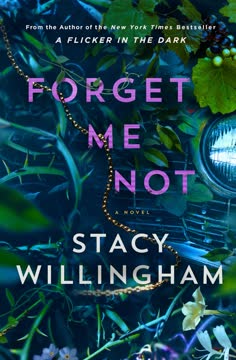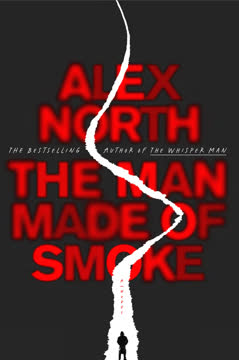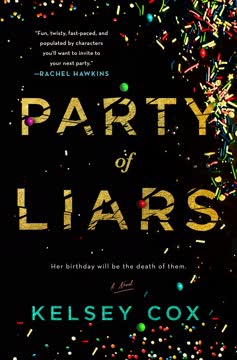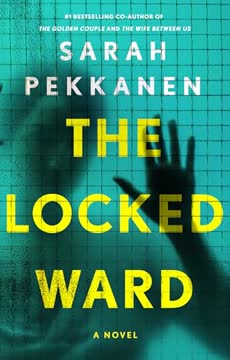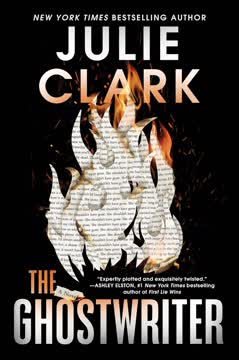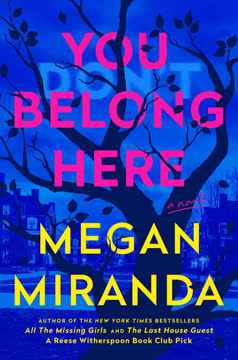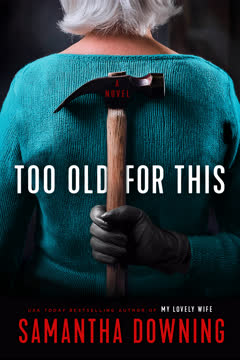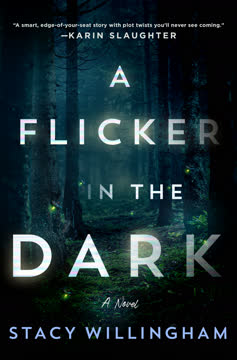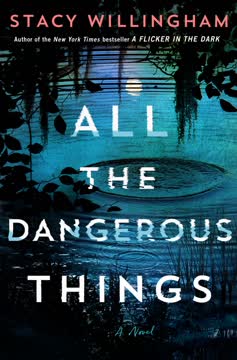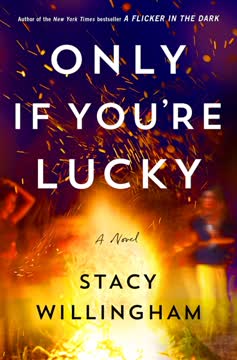Plot Summary
Haunted Reflections Return
Claire Campbell, a journalist in New York, is haunted by the disappearance of her older sister, Natalie, twenty-two years ago. Natalie's face invades Claire's dreams, always appearing in the mirror instead of her own. The trauma of Natalie's unsolved case has shaped Claire's life, driving her into a career reporting on crime and loss, but she remains emotionally adrift, unable to move on. When a call from her estranged father brings news of her mother's accident, Claire is forced to consider returning to her South Carolina hometown—a place thick with memories and unresolved pain. The city's noise and her own isolation only amplify the ghosts of her past, setting the stage for a reluctant homecoming.
The Call Home
Claire's father calls with news that her mother has been injured in a fall, breaking her leg and leaving her unable to care for herself. Despite years of distance and emotional estrangement, Claire feels obligated to help. The call dredges up old resentments and guilt, especially as her father manipulates her with reminders that her mother has no one else. Claire's life in New York is stagnant—her career stalled, her finances dwindling—making the decision to return home both a practical and emotional reckoning. The journey back is fraught with anxiety, as Claire prepares to confront not only her mother but the unresolved trauma of Natalie's disappearance.
Secrets in the Shoebox
Back in her childhood home, Claire is overwhelmed by the unchanged environment—her mother's denial, the preserved bedroom, and the omnipresent reminders of Natalie. While exploring Natalie's untouched room, Claire discovers a shoebox filled with old photographs and a mysterious undeveloped roll of film. The images capture moments of happiness, parties, and friends, but also hint at secrets Natalie kept hidden. The film, never developed, becomes a symbol of the unanswered questions surrounding Natalie's last summer. This discovery reignites Claire's obsession with the past, compelling her to dig deeper into the circumstances of her sister's disappearance.
Back to the Past
The act of returning home is both physically and emotionally jarring for Claire. She is confronted by her mother's alcoholism, the suffocating atmosphere of the house, and the unspoken grief that lingers in every room. The community's small-town gossip and the unchanged landscape only heighten her sense of being trapped in time. Claire's insomnia and nightmares intensify, blurring the line between memory and reality. The unresolved tension with her mother and the constant presence of Natalie's memory force Claire to confront the ways in which her family has been shaped—and broken—by loss.
Ghosts in the Bedroom
Unable to resist, Claire enters Natalie's preserved bedroom, a shrine to the girl she once was. The room is frozen in time, filled with the scent of her sister and the artifacts of her adolescence. Claire's exploration is both an act of mourning and a search for answers. She finds herself reliving childhood memories, both joyful and painful, and is struck by the realization that she never truly knew Natalie. The discovery of the shoebox and the roll of film deepens the mystery, suggesting that Natalie's life—and her disappearance—were more complicated than anyone realized.
Unraveling Old Film
Determined to uncover the secrets of the past, Claire takes the undeveloped film to a local shop. The process is slow and nerve-wracking, as the film is old and fragile. When the prints are finally ready, Claire is confronted with images of people and places she doesn't recognize—strangers, a woman on vacation, and scenes that don't fit her memories of Natalie. The confusion deepens her sense of unease, suggesting that the answers she seeks may be more elusive than she hoped. The film becomes a metaphor for the fragmented and unreliable nature of memory.
Vineyard of Shadows
Overwhelmed by her mother's indifference and the oppressive atmosphere at home, Claire accepts a job at Galloway Farm, a vineyard on a nearby island. The farm, with its lush landscape and isolation, offers a temporary escape and a chance to earn money. Claire is introduced to Liam, the caretaker, and the enigmatic owners, Mitchell and Marcia. The farm's beauty is undercut by a sense of neglect and secrecy. As Claire settles into the guesthouse, she senses that the vineyard holds its own dark history, one that may be connected to Natalie's fate.
The Guesthouse Discovery
While cleaning the guesthouse, Claire discovers a hidden vent containing an old, maroon diary. The diary, written by Marcia decades earlier, is filled with intimate confessions, secrets, and the story of a forbidden love with Mitchell. As Claire reads, she becomes engrossed in Marcia's world—a world of control, manipulation, and escape. The diary's revelations mirror Claire's own experiences and suspicions, blurring the line between past and present. The discovery becomes a catalyst for Claire's investigation, as she realizes that the farm's history is intertwined with the disappearances of multiple young women.
Marcia's Diary Unearthed
Marcia's diary recounts her strict religious upbringing, her rebellion, and her seduction by Mitchell, a charismatic outsider. The narrative shifts to the formation of a commune-like "family" at the original Farm, where vulnerable girls are drawn in and controlled. Marcia's account details the arrival of other lost girls—Lily, Annie, Katherine—and the gradual descent into isolation and violence. The diary exposes Mitchell's psychological manipulation and the toxic dynamics that led to tragedy. As Claire reads, she recognizes patterns that echo Natalie's story, fueling her determination to uncover the truth.
The Farm's Dark Roots
Claire's research, combined with the diary, uncovers a pattern of disappearances linked to Mitchell and the Farm. She learns of Katherine Prichard, a Berkeley student who vanished in 1983, and others whose fates remain unknown. The discovery of a hidden camper in the woods, filled with relics and evidence, ties the past to the present. Claire realizes that the Farm's history is one of predation, exploitation, and cover-up, with Mitchell at the center. The web of secrets extends to the local police, who have protected the Farm for decades.
Lily Was Here
As Claire delves deeper, she uncovers the shocking truth: the woman living as Marcia is actually Lily, a former runaway and accomplice to Mitchell. The real Marcia was murdered years ago, her identity assumed by Lily to maintain the illusion of a family. Lily's presence is marked by the phrase "Lily was here," etched into furniture and walls—a haunting signature of her need to belong. The revelation reframes the entire narrative, exposing the extent of the deception and the danger Claire faces.
The Poisoned Cup
Realizing she is in mortal danger, Claire attempts to help the real Marcia (Lily) escape, only to be betrayed and captured. Mitchell and Lily plan to silence Claire, using the same methods that claimed the lives of previous victims—poisoned tea, isolation, and violence. In a desperate act of self-defense, Claire wounds Mitchell and, with unexpected help from Liam, manages to escape. The confrontation exposes the full horror of the Farm's legacy and the complicity of those who enabled it.
Natalie's Vanishing
Through Liam's confession and the evidence Claire uncovers, the true story of Natalie's disappearance is revealed. Natalie, Claire's half-sister and Liam's as well, discovered the Farm's secrets and tried to help Liam escape. Betrayed by a corrupt police chief and lured into a trap, Natalie was murdered to protect the Farm's secrets. Her body, along with those of other victims, was hidden on the property. The revelation brings closure to Claire's lifelong quest, but at a devastating emotional cost.
The Missing Girls' Web
The investigation uncovers a network of enablers—local police, townspeople, and family members—who turned a blind eye to the Farm's crimes. The complicity of Chief DiNello, who framed an innocent man for Natalie's murder, is brought to light. The story becomes one of systemic failure, generational trauma, and the ways in which communities protect their own at the expense of the vulnerable. Claire's reporting brings long-overdue justice, but also forces her to confront the limits of truth and the cost of survival.
The Truth in the Woods
With Liam's help, Claire leads authorities to the hidden camper and the graves of the missing girls. The physical evidence—Natalie's necklace, Katherine's belongings, Marcia's diary—corroborates the stories of abuse and murder. The discovery brings closure to the families of the victims and exposes the full extent of the Farm's crimes. The process is both cathartic and harrowing for Claire, who must reconcile her role as both investigator and survivor.
The Family's Lies
In the aftermath, Claire confronts her mother, Annaliese, and learns the truth about her own parentage and the family's connection to the Farm. Annaliese reveals her own history with Mitchell, her escape, and the guilt that shaped her life. The conversation is raw and redemptive, allowing both women to begin healing. Claire understands that the legacy of trauma is not just personal, but generational—a cycle that can only be broken by facing the truth.
The Final Escape
Liam, once complicit in the Farm's crimes, chooses to confess and help bring justice to the victims. His actions allow him to reconnect with his biological family and begin a new life. Claire, too, finds a measure of peace, using her reporting to honor the lost girls and ensure their stories are not forgotten. The Farm is dismantled, its secrets exposed, and the survivors begin the slow process of rebuilding.
The Unmasking
The final pages of Marcia's diary, discovered by Claire, reveal the truth of her murder and Lily's assumption of her identity. The diary serves as both a confession and a testament to the resilience of the victims. The unmasking of Lily brings closure to the mystery and allows the authorities to piece together the full story. The act of bearing witness becomes an act of justice, as the lost girls are finally remembered.
The Last Entry
Marcia's last diary entry, written on the eve of her planned escape, is a poignant reflection on hope, motherhood, and the desire for freedom. Her words, preserved by chance and discovered decades later, become a lifeline for Claire and a key to unraveling the Farm's secrets. The diary's survival is an act of defiance—a refusal to be erased by violence and silence.
Forget Me Not
In the aftermath, Claire publishes her story, bringing national attention to the case and honoring the memory of the victims. The Farm is dismantled, the complicit are held accountable, and the lost girls are finally laid to rest. Claire finds a measure of healing, reconnecting with her family and forging a new path forward. The story ends with a commitment to remembrance—the promise that the lost will not be forgotten, and that justice, though delayed, is possible.
Characters
Claire Campbell
Claire is a journalist whose life has been defined by the disappearance of her older sister, Natalie. Driven by guilt, grief, and a relentless need for answers, Claire is both emotionally fragile and fiercely determined. Her relationships are marked by distance and mistrust, shaped by the trauma of her family's collapse. Claire's return home forces her to confront not only the mystery of Natalie's fate but also the secrets and lies that have shaped her own identity. Her journey is one of self-discovery, redemption, and the painful process of breaking generational cycles of silence.
Natalie Campbell
Natalie is the beautiful, enigmatic older sister whose disappearance haunts the entire narrative. Preserved in memory as eternally young, Natalie is both a symbol of lost innocence and a complex, flawed individual. Her secret life, hidden relationships, and quest for identity mirror Claire's own struggles. Natalie's fate is the central mystery, and her story is gradually revealed through evidence, confession, and the memories of those she left behind. Her absence is a presence, shaping the lives of everyone who loved her.
Liam
Liam is the caretaker at Galloway Farm, initially presented as a rugged, kind-hearted worker. As the story unfolds, his true identity is revealed: he is both Claire's half-brother and Natalie's, the son of Mitchell and Marcia (or Lily). Raised in isolation, Liam is a product of the Farm's toxic environment—complicit in its secrets but ultimately seeking redemption. His relationship with Claire is fraught with guilt, longing, and the hope for escape. Liam's confession and decision to help bring justice mark his transformation from victim to agent of change.
Mitchell
Mitchell is the manipulative, controlling force at the heart of the Farm's darkness. Charismatic and enigmatic, he preys on vulnerable young women, creating a cult-like "family" built on secrecy and abuse. His relationships are defined by power and exploitation, and his legacy is one of generational trauma. Mitchell's ability to charm and control is both his weapon and his downfall, as the truth of his crimes is finally exposed.
Marcia (Lily)
The woman living as Marcia is, in fact, Lily—a former runaway who assumed Marcia's identity after her murder. Lily is both victim and perpetrator, shaped by a lifetime of abandonment and a desperate need to belong. Her complicity in the Farm's crimes is driven by loyalty, fear, and a warped sense of family. Lily's presence is marked by the phrase "Lily was here," a haunting reminder of her need to leave a mark on a world that has forgotten her. Her unmasking is both tragic and cathartic.
Annaliese Campbell (Claire's Mother)
Annaliese is a complex figure, marked by alcoholism, denial, and a deep well of guilt. Her own history with Mitchell and the Farm is gradually revealed, exposing the generational nature of trauma and secrecy. Annaliese's inability to protect her daughters is both a source of shame and a reflection of her own victimization. Her eventual confession and reconciliation with Claire are acts of courage and healing.
Chief Eric DiNello
DiNello is the local police chief who played a pivotal role in covering up the Farm's crimes. His complicity is driven by self-interest, loyalty to the community, and a willingness to sacrifice the vulnerable for the sake of order. DiNello's manipulation of evidence and witnesses, including framing an innocent man for Natalie's murder, is emblematic of the systemic failures that allowed the Farm to persist.
Bethany Wheeler
Bethany is a key figure in Natalie's life, representing both the innocence of youth and the pain of loss. Her testimony, shaped by manipulation and guilt, plays a crucial role in the investigation. Bethany's own journey mirrors Claire's, as she grapples with the limits of memory, the burden of survival, and the need for closure.
Lily (as herself)
As the real Lily, she is a tragic figure—abandoned, desperate for family, and ultimately complicit in violence. Her need to belong drives her to assume Marcia's identity and participate in the Farm's crimes. Lily's story is one of survival at any cost, but also of the corrosive effects of trauma and complicity.
Katherine Prichard
Katherine is the Berkeley student whose disappearance in 1983 marks the beginning of the Farm's legacy of violence. Her story, uncovered through research and evidence, is a reminder of the many girls whose lives were stolen and whose stories were nearly erased. Katherine's fate is a catalyst for the unraveling of the Farm's secrets.
Plot Devices
Dual Timelines and Interwoven Narratives
The novel employs a dual timeline structure, alternating between Claire's present-day investigation and Marcia's diary entries from the 1980s. This interweaving of narratives allows the reader to experience the unfolding mystery from multiple perspectives, gradually revealing the connections between characters and events. The diary serves as both a plot device and a symbol of the persistence of memory, bridging the gap between generations and exposing the cyclical nature of trauma.
The Unreliable Narrator and Fragmented Memory
Both Claire and Marcia (and later Lily) are unreliable narrators, their perceptions shaped by grief, guilt, and manipulation. The use of dreams, nightmares, and fragmented memories blurs the line between reality and illusion, forcing the reader to question what is true. The undeveloped film, the hidden diary, and the preserved bedroom all serve as metaphors for the ways in which the past is both preserved and distorted.
Foreshadowing and Symbolism
The novel is rich in foreshadowing and symbolism: the phrase "Lily was here," the recurring image of the mirror, the motif of the poisoned cup, and the forget-me-not flowers all serve as clues to the underlying mystery. These symbols reinforce the themes of memory, identity, and the desire to be remembered. The gradual revelation of the Farm's history is mirrored by the slow development of the film and the piecing together of the diary.
The Locked-Room Mystery and the Isolated Setting
The isolated setting of Galloway Farm, with its guesthouse, vineyard, and surrounding woods, creates a sense of claustrophobia and danger. The locked-room mystery—Claire's imprisonment, the hidden graves, the secret camper—intensifies the suspense and underscores the theme of entrapment. The setting becomes a character in its own right, shaping the actions and fates of those within it.
Generational Trauma and Cycles of Abuse
The novel explores the ways in which trauma is passed down through families and communities. The secrets kept by Annaliese, the complicity of the police, and the repeated victimization of young women all point to a cycle of abuse that can only be broken by confronting the truth. The act of bearing witness—through journalism, confession, and remembrance—is presented as both a moral imperative and a path to healing.
Analysis
Forget Me Not is a haunting exploration of the ways in which the past refuses to stay buried. Through its intricate structure and layered characters, the novel examines the corrosive effects of secrecy, the generational transmission of trauma, and the desperate human need to be seen and remembered. The story is as much about the search for justice as it is about the search for self—forgiveness, identity, and connection. By weaving together the stories of lost girls, complicit adults, and those left behind, Stacy Willingham crafts a narrative that is both a gripping thriller and a poignant meditation on the power of truth. The novel's ultimate message is one of hope: that even in the face of overwhelming darkness, the act of bearing witness can bring healing, and that the lost are never truly forgotten as long as their stories are told.
Last updated:
Review Summary
Forget Me Not receives mostly positive reviews, with an average rating of 4 out of 5 stars. Readers praise Willingham's atmospheric writing, compelling mystery, and unexpected twists. The Southern setting and slow-burn suspense are highlighted as strengths. Some critics find the pacing slow and predictable in parts. Many reviewers compare it favorably to Willingham's previous works, though opinions vary. The story follows Claire Campbell as she investigates her sister's decades-old disappearance, uncovering dark secrets at a vineyard.
Similar Books
Download PDF
Download EPUB
.epub digital book format is ideal for reading ebooks on phones, tablets, and e-readers.
